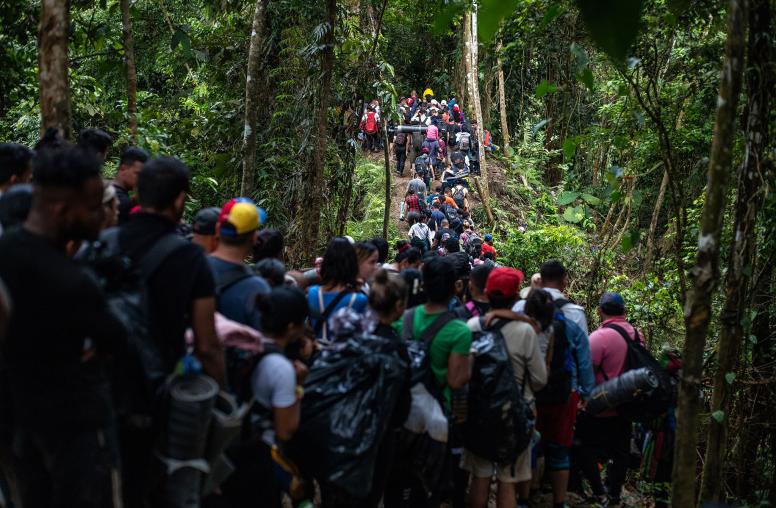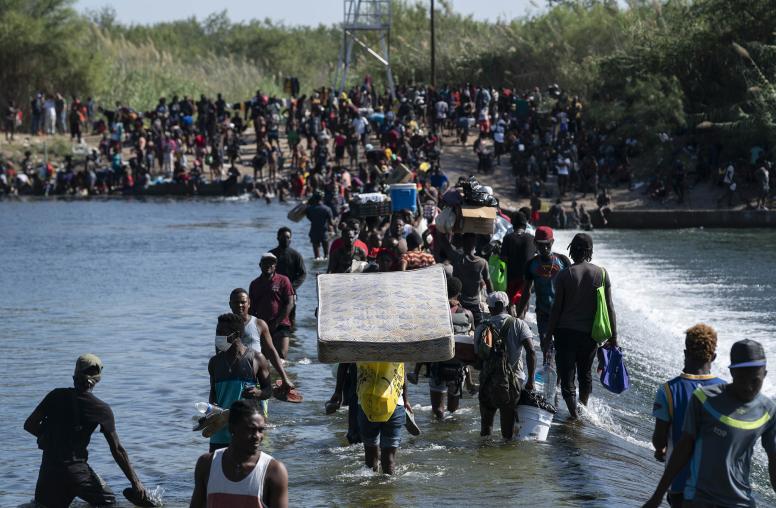Fragile States and Violent Extremism: New Ideas for a Policy of Prevention
Experts highlight approaches in report for Congress.
On April 21, suicide bombers in Sri Lanka reminded the world that the end of the Islamic State’s “caliphate” by no means marked the defeat of violent extremism. Indeed, despite trillions of dollars spent and tens of thousands of lives lost, terrorism is spreading. The urgency of addressing the root causes behind terrorism, particularly where the ground for it is most fertile, has never been greater, said members of the Task Force on Extremism in Fragile States this week at the U.S. Institute of Peace.

In the aftermath of 9/11, the country’s top priority was to determine why the government failed to head off the attacks and to institute reforms to ensure it couldn’t happen again, said former New Jersey Governor Tom Kean, chair of the 9/11 Commission and co-chair of the Task Force. Prevention was mentioned in the commission’s report, but addressing it was left to another day, Kean said. The Task Force report, which calls for an all-government effort to tackle the underlying causes of extremism in fragile states, should be viewed as a follow on, Kean said.
“The Task Force says prevention has to be at the top of the agenda,” Kean said during a discussion of the report at USIP this week. “If we allow the spread of terrorist ideology and networks, it will get here again, particularly coming from fragile states.”
At Congress’s request, USIP convened a task force last year of 15 foreign policy and national security experts to “develop a comprehensive plan to prevent the underlying causes of extremism in fragile states.” Its core recommendations are to reach a shared understanding of the problem across government and to develop a framework for strategic prevention; establish coordinated roles and responsibilities for agencies and departments in prevention efforts; and create an international fund to support locally led efforts that help damp extremism. Some of the Task Force’s proposals are reflected in separate bipartisan bills under consideration in the House and Senate, each called the Global Fragility Act.
Discussing the report, along with Kean, were Task Force members Madeline Albright, the former secretary of state; former National Security Advisor Stephen Hadley, the chair of USIP’s board of directors; and USIP President Nancy Lindborg. The report itself was first released in February.
Lessons on Fragility
Washington Post foreign affairs columnist David Ignatius, moderating the discussion, asked Lindborg to outline what the Task Force had learned about fragility and what it would mean if its recommendations were embraced across the U.S. government.
The key conditions that enable extremism to take root and spread are a sense of injustice, unaddressed grievances, and citizens’ perception that government is failing to provide for their needs—that the social contract is broken—Lindborg said.
The more fragile a place, the more likely it is to be the common denominator for a host of problems related to violent conflict—civil wars, migration, incidents of violent extremism, she said. As ISIS “mutates into ISIS 2.0, it’s popping up in those places that are the most fragile, like the Democratic Republic of Congo or Afghanistan,” she said—places where addressing core governance issues is critical to dimming the lure of extremist ideologies.
The report emphasizes the importance of supporting locally generated solutions with staying power rather than parachuting in external forces. In doing so, American defense, diplomatic and development capabilities need to operate from the same framework—with international partners—free from the bureaucratic shackles that constrain agile action, experimentation and, particularly, long-term continuity, Lindborg said. Americans are the most generous people in the world and have the shortest attention spans, Albright quipped.
Political Cultures
Two Tunisian towns described in the report exemplify how local political culture can fuel or inhibit extremism and where the U.S. might find partners. Both towns, about the same size, share tribal heritage and suffer from similar social and economic problems. In one, jihadist preachers took over mosques and sent dozens of fighters to ISIS. In the other, extremism never took root. The difference? It appears that in the second, the historic presence of trade unions provided space for civic engagement and an outlet for grievances and nonviolent resistance.
At a time when the focus of American foreign policy has begun turning from violent extremism toward competition with China and Russia, the role fragile states play in both must be addressed simultaneously, Hadley said. China and particularly Russia advance their own interests and frustrate the U.S. by contributing to bad governance in those countries, which fosters extremism and destabilizing migration, he said.
“So fragile states are a problem whether you’re concerned about terrorism or great power competition,” he said. “They are a theater for both.”
Prevention Starts with the 3Ds
Lt. General Michael Nagata, the director for strategic operational planning at the National Counterterrorism Center, and other U.S. officials reinforced Hadley’s contention that violent extremism and other strategic challenges are deeply entangled.
“All extremists—religious or ideological—are finding new opportunities in the contest for influence among sovereign states,” he said. The contest among “peer competitors” is creating political uncertainty and power vacuums that form breeding grounds for extremism, Nagata said. The question for Americans, he said, is whether the country can maintain a dual focus. At this point, there is not even a definition of prevention accepted across the government.
The State Department prefers a limited definition that will allow prevention efforts to be measured and managed, said Denise Natali, who oversees the Bureau of Conflict and Stabilization Operations.
“In this environment, these commitments cannot be open-ended,” Natali said. USAID and her bureau had agreed that conflict prevention is a “deliberate effort to disrupt likely pathways to the outbreak or escalation or recurrence of violent conflict.”
Chris Milligan, the counselor to USAID Administrator Mark Green, said that the thinking behind the recent reorganization of the agency to create new bureaus reinforces the Task Force’s findings.
A focus on prevention will heighten awareness of shifts in the environments where USAID works and provide a more comprehensive way to look at violent extremism, as well as enhance data collection and inter-agency partnerships, Milligan said. Consistent with the report, USAID is moving to a “local systems approach.”
“We need to make prevention the prism through which we look at the problem of terrorism,” Hadley said.
International Partners
Albright said resistance to prevention in the political sphere arises from the question, “Why are we doing this alone?” But, “We are not doing it alone,” she said. “We must be working internationally. It will take a long time and we need help that includes NGOs and the private sector because it isn’t just an American problem.”
International and private sector leaders who also spoke at USIP made clear that other countries, international actors, and civil society groups are ready to work with the United States and are arriving at a growing consensus on how to undertake prevention. They emphasized many of the same themes raised by Task Force Members and U.S. officials—the need for aid harmonization, more sustained investments in prevention, adaptive approaches, and local ownership of programs and initiatives. More needs to be done, they argued, to build trust within local communities, particularly through partnerships with civil society.
As Nagata, who spent 18 years fighting terrorists, reminded the audience, while effective prevention does not come cheap, its cost is a fraction of confronting terrorists militarily.

